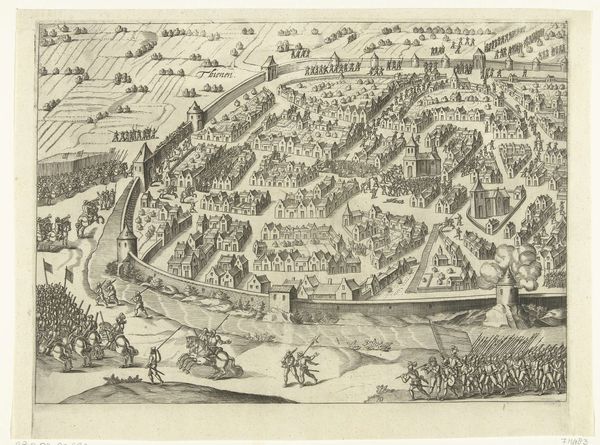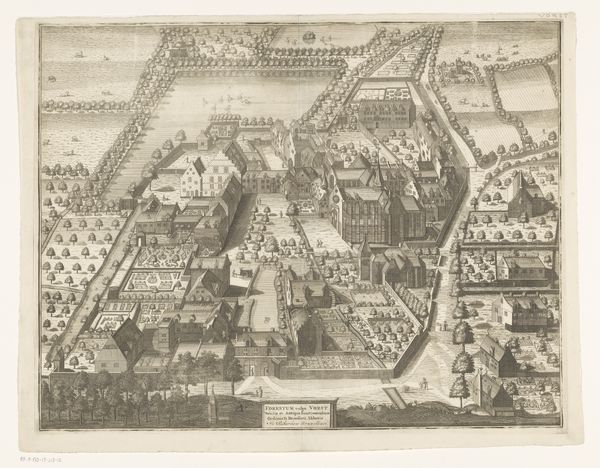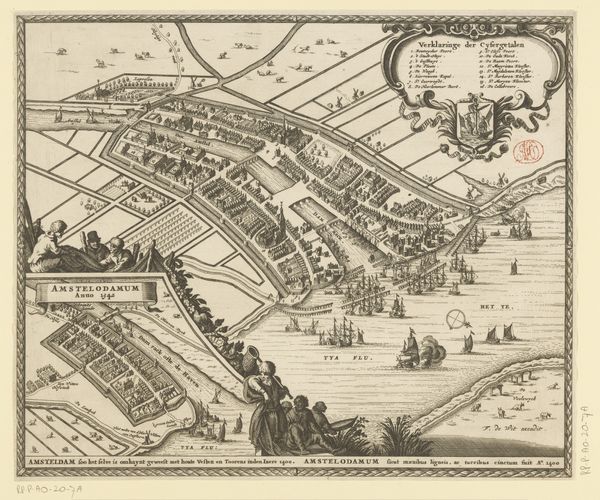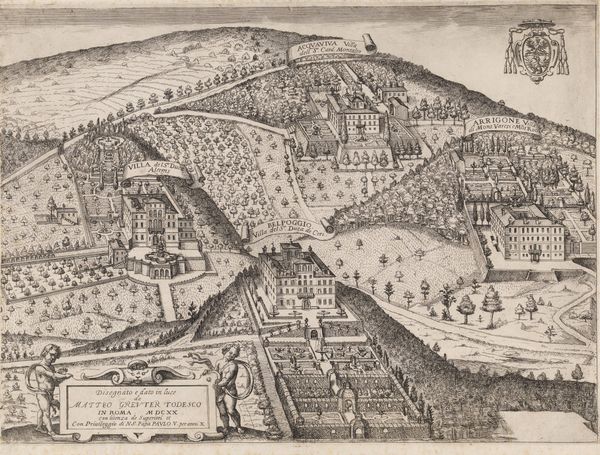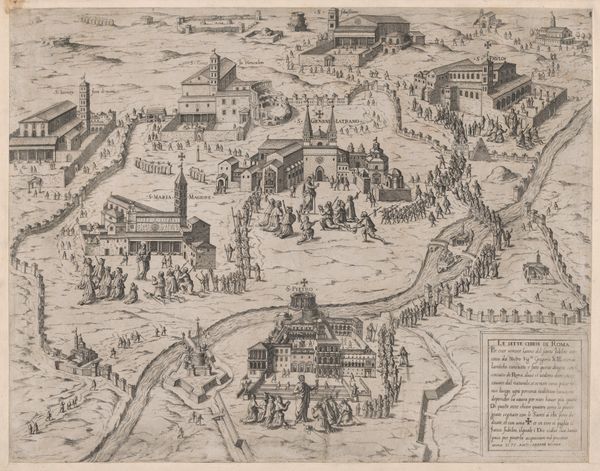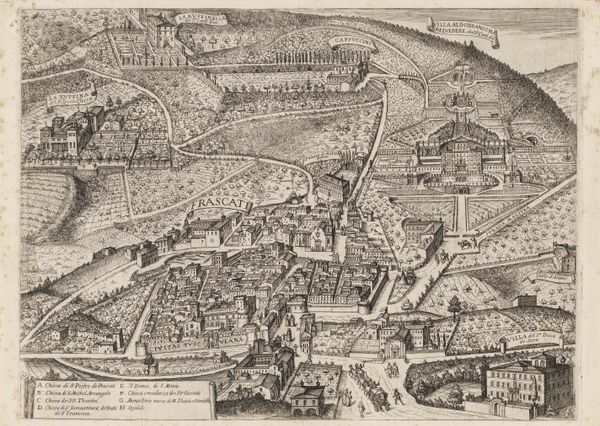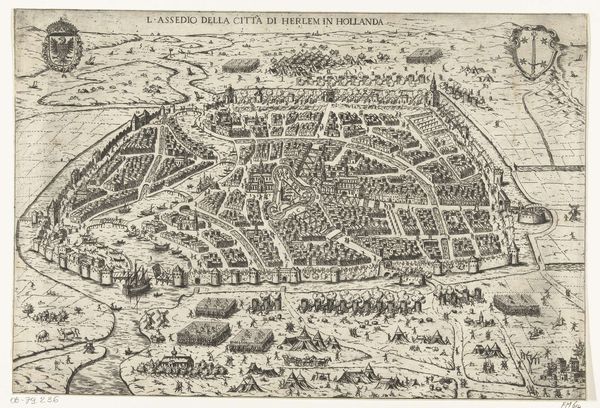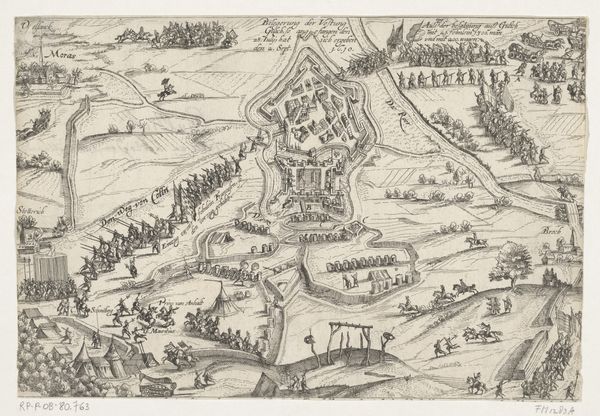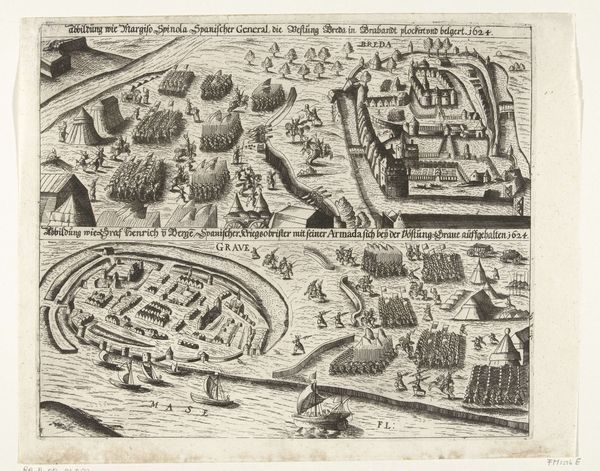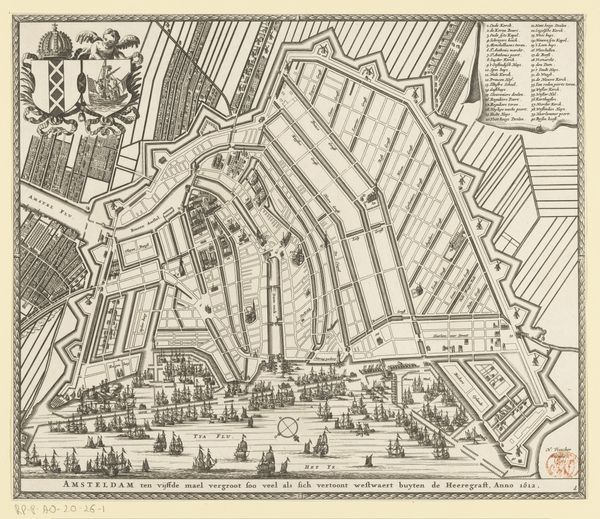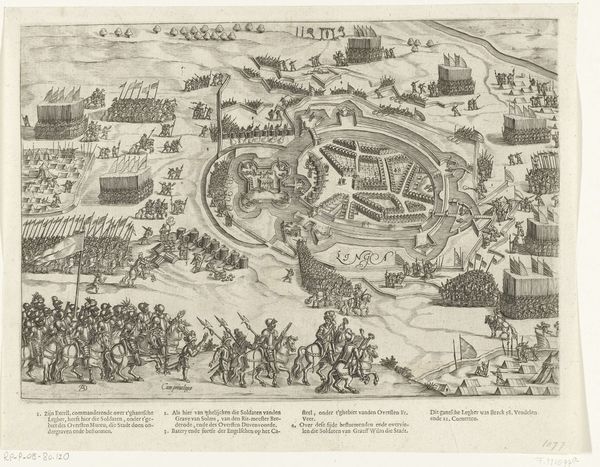
drawing, ink, engraving
#
drawing
#
landscape
#
ink
#
cityscape
#
engraving
Dimensions: height 269 mm, width 334 mm
Copyright: Rijks Museum: Open Domain
Editor: So, this is an anonymous drawing titled "Vogelvluchtgezicht op Sint-Maartensdijk," dating from 1696 to 1728. It’s an ink drawing, or rather an engraving, of a city. I’m struck by how this almost looks like a map viewed from above… What can you tell me about this piece? Curator: It is indeed, a bird’s-eye view, and that perspective itself speaks volumes. In the 17th and 18th centuries, these cityscapes weren't just aesthetic exercises; they were strategic tools. They showcase not just buildings, but also defenses, trade routes, and the power a city held. Notice how precisely everything is laid out? Editor: I see the detail now. Why would an artist remain anonymous though? Curator: Anonymity wasn’t uncommon, especially if this was commissioned. These views were often produced for municipal authorities or wealthy merchants, intended for public display, for promotion. The artist may have been a draughtsman employed specifically to produce accurate records rather than making a personal artistic statement. It's interesting to think about the image's intended audience. Who do you imagine was looking at this in the 17th century? Editor: Probably someone important. Looking at this makes me wonder about how cities marketed themselves even back then. This wasn't just about showing the town; it was about projecting its strength and prosperity. Curator: Precisely! It is about self-fashioning on a civic scale. The interesting point here is that it reveals much more than the literal streets and architecture; this city is making an appeal to potential residents and investors. This shows not only its geographic but its socio-political place. What are your thoughts? Editor: This definitely makes me appreciate how deeply rooted advertising and civic promotion are. I never thought I could view a drawing like that, thinking of these different components behind the artistic creation. Curator: Exactly! It's a potent reminder that art rarely exists in a vacuum; it speaks to and is shaped by social and political needs.
Comments
No comments
Be the first to comment and join the conversation on the ultimate creative platform.
